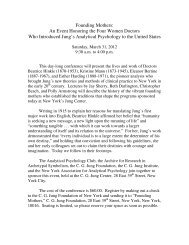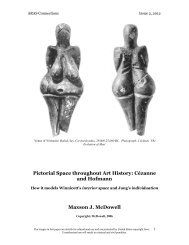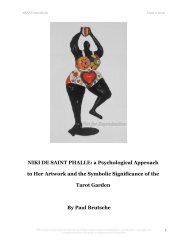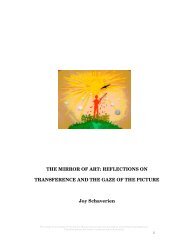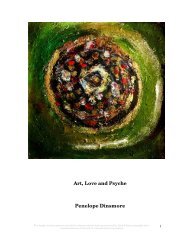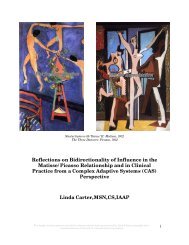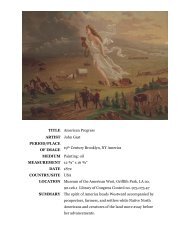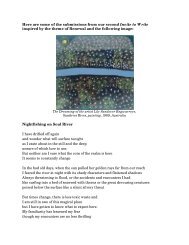The Mandala in Tibetan Buddhism by Martin Brauen - ARAS
The Mandala in Tibetan Buddhism by Martin Brauen - ARAS
The Mandala in Tibetan Buddhism by Martin Brauen - ARAS
You also want an ePaper? Increase the reach of your titles
YUMPU automatically turns print PDFs into web optimized ePapers that Google loves.
Abandonment of self<br />
Despite their partly divergent views and rituals, the different Buddhist<br />
schools and traditions of teach<strong>in</strong>g share certa<strong>in</strong> basic assumptions, <strong>in</strong> particular<br />
the theory of selflessness. What we <strong>in</strong> the West consider to be an <strong>in</strong>dividual, <strong>in</strong><br />
the Buddhist view comprises five so-called aggregates or heaps (skandha). <strong>The</strong>se<br />
are the skandhas of forms (corporeality, materiality, matter), of feel<strong>in</strong>gs, of<br />
perceptions, of mental factors (volition, mental formations), and of<br />
consciousnesses (events of consciousness), which comb<strong>in</strong>e with each other <strong>in</strong><br />
mutual <strong>in</strong>terrelation. <strong>The</strong> five skandhas are transitory and subject to constant<br />
change, there<strong>by</strong> also imply<strong>in</strong>g the transitory nature of human be<strong>in</strong>gs. That which<br />
is transitory can, moreover, possess no eternal soul or — as Buddhists also say —<br />
no permanent self. In the West the <strong>in</strong>dividual is thought to possess a content, a<br />
core, which for Buddhists is a wrong view, the root of all our misery. <strong>The</strong> concept<br />
of “I” and of “self” leads to crav<strong>in</strong>g, which cont<strong>in</strong>ually gives rise to new<br />
dissatisfaction, anguish, and sorrow. As a consequence of this realization, the<br />
delusion of self has to be abandoned. If a person escapes from the shackles of the<br />
self, he or she escapes also from crav<strong>in</strong>g and with it from sorrow and comes<br />
closer to the state known as nirvāna, which for Buddhists means freedom from<br />
bonds, freedom from attachments, freedom from crav<strong>in</strong>g. This state of freedom<br />
and <strong>in</strong>dependence permits an active life and a feel<strong>in</strong>g of closeness to others to<br />
arise - giv<strong>in</strong>g up the self makes sense only if it goes along with a turn<strong>in</strong>g toward<br />
other liv<strong>in</strong>g be<strong>in</strong>gs.<br />
All Buddhist schools agree on the ideal of selflessness. Differences exist <strong>in</strong><br />
the method, the way (yāna) <strong>in</strong> which the experience of non-essence can be<br />
atta<strong>in</strong>ed. To simplify greatly, one can dist<strong>in</strong>guish between the two ways: the<br />
<strong>The</strong> images <strong>in</strong> this paper are strictly for educational use and are protected <strong>by</strong> United States copyright laws. Unauthorized<br />
use will result <strong>in</strong> crim<strong>in</strong>al and civil penalties.<br />
8



